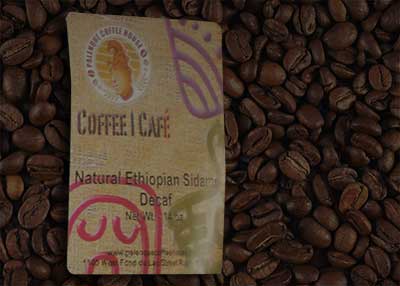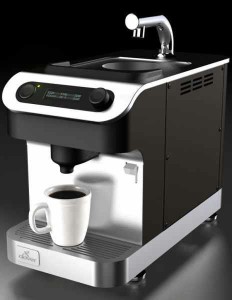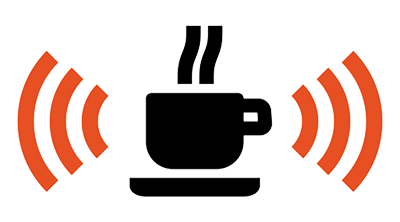Posted on May 3, 2012

Good Peruvian coffee is often gentle in flavor and very mild in its “bite,” or acidity. This makes it a great coffee for coffee lovers who want a fairly mild experience without too much of the pungency of good “black” coffees. Urubamba: Grown in the southern areas of Peru (near Machu Picchu, as it happens), Urubamba means “flat land of spiders.” Not necessarily what you want to hear when it comes to coffee beans, of course, and many Peruvian coffee lovers flock to Chanchamayo instead, but you’d be surprised at the flavors that come out of this region. Bean description: Very mild, and not necessarily rich – but certainly a coffee worth trying if you enjoy a milder bean that doesn’t assert itself strongly with other flavors. Chanchamayo: Perhaps the definitive coffee of Peru, this coffee is grown in the central regions of the country where the elevation is just right for a bean that offers coffee lovers a little bit of everything. Bean description: The taste is light, smooth, almost chocolaty and features a good balance of everything from richness to aftertaste; perhaps the best way to experience Peruvian...
Read More »
Posted on Apr 30, 2012

As is the case for Brazil, a majority of the finest single origin coffees in Venezuela come through one port, which is why they earned a common name: Maraicaibos. There are three distinct types of this coffee that bear mentioning here. Cucuta: Cucuta is another type of Venezuelan coffee that is shipped through Maracaibos that has not been mentioned here yet. It’s grown in northeastern Venezuela. Buying Cucuta can be a little tricky for seekers of single origin coffee because Cucuta is a market name and doesn’t necessarily refer to a single origin coffee, though it can be. It is believed by many that the best coffees come from western Venezuela (which borders Colombia), so be sure to read your Venezuelan coffees closely. Bean description: It varies, but the bean shares much of the color and flavor of the other coffee beans of eastern Venezuela – richness and a healthy balance of acidity. Caracas: An entire class of coffees, which can mean the coffee is both potentially single origin…and potentially not. Be sure to watch for the grade of the coffee, looking for “Lavada Fino” which means “fine, washed.” Bean description: You roll the dice with Caracas if you’re not sure what the grade is; some of these beans, however, can produce very subtle and rich flavors that coffee connoisseurs would consider excellent. Trujillo: Like Merida and Tachira, this type of coffee shares a port with Cucuta but comes from a different region of Venezuela that is believed to produce richer, more precise coffee flavors than does Cucuta. This coffee is grown in western Venezuela, which is where most single origin coffee seekers prefer their Venezuelan coffee to have been grown. Bean description: Sweet, slightly rich, acidity that is balanced against the flavor – very similar to a Colombian coffee. Tachira: Speaking of beans close to a Colombian coffee, Tachira is perhaps Venezuela’s most Colombian-like production – and for many people, that’s a very good thing indeed. Bean description: Sweet and light, the flavors of this bean tend to be very easy on the palate and make for interesting espresso if you’re willing to give it a try. Merida: You can tell Merida is a coffee grown in Venezuela as opposed to Colombia, and that’s not necessarily a bad thing. Merida’s own blend of uniquely sweet and light flavors make it distinguishable from the other Maracaibos coffees, and as a single origin coffee it is a sweet and unexpected surprise for many. Bean description: Different from Tachira but many people believe it’s just as good; the beans are grown in separate regions which makes for a slightly different body and acidic...
Read More »
Posted on Apr 26, 2012

Colombia is a name that is synonymous with coffee – at least in the United States, where marketing campaigns for “Columbian” coffee tend to dominate the supermarket industry. Much of Colombia is indeed a rich haven for coffee growing, but if you want to experience the richest Colombian coffee experience, you’ll have to know where to look. Medellin: Like the other of the “MAM” coffees that make Colombia famous, this is both a region and a coffee – certainly something you’ll want to look out for in your search for premium single origin coffee. However, many companies simply ship the coffees out together, which explains the MAM acronym. Bean description: Large, high-quality beans mean a rich flavor and a great acidic balance. There is even a slight hint of sweetness like a ripe cherry or perhaps a chocolate. Armenia: No, not that Armenia. Like Medellin, this coffee and member of the “Colombia Coffee Triangle” is both a region and a type of coffee. As part of the MAM trio, it would not be surprising if you have had some Armenia coffee already as part of a multi-blend. Bean description: Very similar though not as large consistently as the Medellin bean, this too has a rich flavor with a good acidic balance thanks to similar soil in eastern Colombia. Manizales: The final portion of the Colombian coffee trio considers itself the world capital of coffee. It is not quite as far east as other regions of Colombia, but it produces a lot of coffee – so much, in fact, that it considers itself the engine of Colombian coffee production. Bean description: Called one of the great mild coffees there is, this offers a good balance for newcomers to coffee – especially newcomers who want to try out a Colombian...
Read More »
Posted on Apr 23, 2012

What better place to start our examination of the single origin coffees of South America than in Brazil, the world’s largest producer of coffee? Much of Brazil’s coffee is dry processed (which means unwashed; the beans are handled by inspection rather than by washing), which is similar to much of the dry processed beans of Africa. So much has been written about Brazilian coffee that it could probably fill its own book. Here’s the condensed version, a list of coffees from Brazil you should keep your eyes peeled for: Santos: Divided into two types of beans, Bourbon and Flat bean, Santos coffee is from where else but Santos? Santos is actually a port where the original coffee plants were imported into Brazil. Bourbon Santos comes from beans that are collected during the first four years of the plants’ growth. This kind of coffee is considered very high quality for espresso blends. This is considered to be of superior quality to that of Flat bean Santos, which is collected after the fourth year in the plant’s life. Bean description: The main distinction between the two types of Santos beans is when they are collected; Santos of a younger maturity is generally a better quality coffee. If you are served “Santos” coffee in the future, you will know that there is a difference between the beans simply because of age. This is considered by many as the premium Brazil coffee. Cerrado: Like Bourbon Santos, Brazil Cerrado coffee is considered ideal for espresso blends, which means it has a lot of flavor potential if used the proper way – and espresso blending is indeed highly specific to each kind of coffee bean. The Cerrado growing region is actually quite dry (and vast), which makes for an ideal bean for this type of use. Bean description: The beans are not particularly anything out of the ordinary, which may help explain why they are often well-used for espresso than regular coffee: their flavor potential lies in pressure and heat and not just heat. Mogiana: Like Cerrado, Mogiana is an entire region of coffee growing in Brazil; it lies along the Sao Paulo and Minas Gerais borders. There is a lot of very nutrient-rich, reddish soil here that makes for interesting coffee and a high yield. Bean description: It varies, but the nutrient-rich soil often makes for healthy, hearty beans that are ideal for multiple blends if the person drinking the coffee is not too picky. Sul Minas: Like Mogiana, this is another large region of Brazil; some have called it the “heart” of Brazil’s coffee cultivation. There are a lot of hills here, which means higher elevations than much of the flatland across Brazil. Bean description: Higher altitudes means better Arabica beans, though this region isn’t particularly known for producing a higher quality of Arabica than anywhere else in the Western...
Read More »
Posted on Apr 19, 2012

Although South America is the top producer of coffee, it’s not easy to pick just any one continent from which the best coffee is produced. Yes, there are lots of great coffees in Brazil – you’ve just learned some of them – but this presents an incomplete picture of the world coffee market as a whole. Much of the coffee you buy in the supermarket is a multiple origin coffee, often blends including Robusta, Arabica, or in some cases a blend of each. In coffee makers of the lowest standards, it’s entirely possible that you could be buying coffee from two entirely different regions. The result, of course, is muddle flavor, conflicting acidity, and a body that is not representative of either type of coffee. In essence, if you don’t pay attention to the kind of coffee you buy on a regular basis, there’s a good chance that you could end up with coffee at its worst. In seeking out the best single origin coffees in the world, you’ve already expanded your knowledge so that you’ll be able to make more informed decisions the next time you go shopping for coffee or go to grab a quick cup of Joe from your local supermarket. Some advertisements will tell you that coffee comes from Columbia, or that it comes from Brazil. This is a great thing, of course, but you have to pay attention to what the marketers are not telling you: is the coffee from Brazil a Robusta multi-blend? There’s a reason you don’t always get the same cup of coffee you expect: they don’t always put what you’re not getting on the label. Our study of South America is a good time to point this out simply because so much of the coffee South America produces ends up in North American supermarkets. Note that just because a coffee comes from South America doesn’t necessarily mean that it’s what you want in your cup. Much of the coffee of Brazil, for example, is considered merely “drinkable” by some aficionados’...
Read More »






